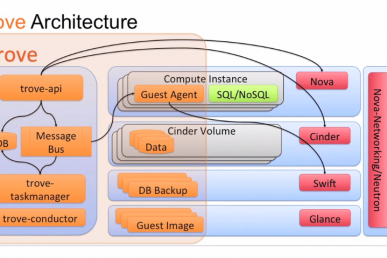Amrith Kumar is an active technical contributor and core reviewer of the OpenStack Trove project, as well as founder and CTO of Tesora Inc. Here he offers what he admits is an opinionated take on how well-meaning changes can be a “scourge” to OpenStack code.
Of late, I wake up every morning revving to go and work on the next cool thing in Trove and I see that overnight some well-meaning person has contributed a change that looks something like this:
String interpolation should be delayed to be handled by the logging code, rather than being done at the point of the logging call.
Ref: http://docs.openstack.org/developer/oslo.i18n/guidelines.html#log-translation For example:
# WRONG
LOG.info(_LI(‘some message: variable=%s’) % variable)
# RIGHT
LOG.info(_LI(‘some message: variable=%s’), variable)
And the code submitted fixes a small number (lets say 5) places where strings sent to logging are rendered.
As I said at the TC-Board meeting in Barcelona, these well-meaning people are actually submitting what on the face of it appear to be valid corrections to the code. Yet, I submit to you that these changes represent a scourge that we should stamp out.
I know for a fact that in Trove there are (currently) 751 occurrences of this particular style error. This is the hacking extension H904, and when enabled in Trove, I get this:
$ tox -e pep8 | grep H904 | wc -l
751
That’s the catch, Trove does not enable this hacking extension. A quick look indicates that only Neutron does.
Why are these well-meaning changes a scourge?
Here’s why:
- They don’t materially improve a project to fix a small fraction of these errors without preventing them from reoccurring.
- Each of these changes takes some considerable CI resources to verify and get approved.
- Each of these changes take time for someone to review, time which could be better spent if we were to fix these problems properly.
So, I submit to you that if you want to submit a patch to fix one of these hacking issues, here is the right way. Of course, I’m opinionated, I’m going to reference one of my own changes as an example!
- If your project does not have hacking extensions, this commit shows you what you have to do to enable that. You may have to bump test-requirements.txt and update the version of hacking that you use in order to use the ‘enable-extensions’ option.
- Enable the hacking rule or extension for the particular style issue at hand; let’s illustrate with H203. H203 ensures that we use assertNone() and not assertEqual(None, …).
- Run the pep8 test against the project and find and correct all places where the failure occurs. Typically this is accomplished by just running ‘tox -e pep8’.
- Test that the code does in fact work as expected; correcting style guidelines can introduce functional errors so make sure that the unit tests pass too. Typically this is accomplished by running ‘tox -e py27 -e py34’.
- Actually exercise the system; launch a system with devstack and the project enabled, and actually exercise the system. In the case of Trove, actually build a guest and launch a database or two.
- Then submit your change including the change to tox.ini that enables the hacking rule for review.
Well, that’s a lot of work! Sure, you really have to work for your Stackalytics credit, right? I’m sure the load on the CI system will show that this is worthwhile.
It is better to do things this way in the long run. With the hacking rule enabled, future commits will also comply with the rule (they will fail pep8 if they don’t). And that will put an end to the cottage industry that has sprung up around finding these kinds of errors and fixing them one at a time.
In conclusion, I urge reviewers in all projects to summarily reject style changes that don’t also enable a hacking rule. Approving them is the wrong thing to do. Require the contributor to enable the hacking rule, and fix the problem the right way. That’s what a good code review is about.
This post first appeared on Hype Cycles. Superuser is always interested in community content, email: [email protected].
Cover Photo // CC BY NC
- Automating OpenStack’s Gerrit commands with a CLI - March 24, 2017
- Reflections on the first OpenStack Project Teams Gathering - February 28, 2017
- Enabling hacking extensions: The right way - December 9, 2016

)










